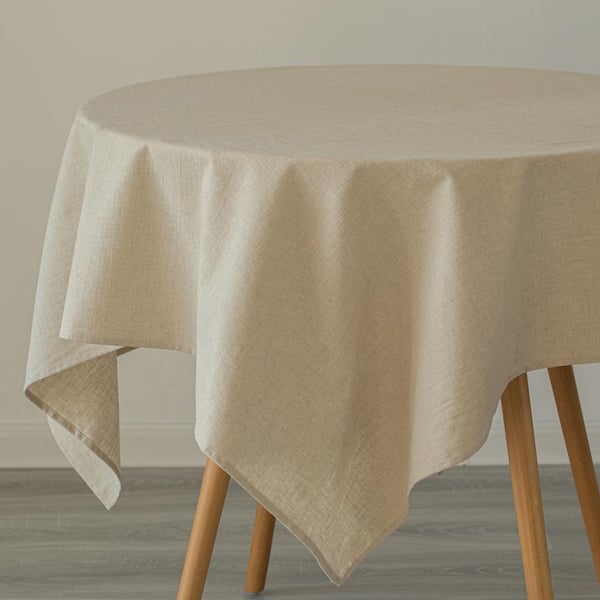Versatile Table Cloths: Designs and Fabrics for Any Occasion
Versatile Table Cloths: Designs and Fabrics for Any Occasion
Blog Article
Bed Linen Material Technologies: Exploring Modern Trends and Creative Applications in Layout and Fabric Industry
In the world of fabric innovations, linen has actually become a timeless yet flexible material that proceeds to mesmerize developers and enthusiasts alike. With an abundant history deeply linked with workmanship and sophistication, bed linen material is experiencing a resurgence in the modern age. From lasting production techniques to innovative weaving technologies, the development of bed linen is reshaping the landscape of the textile industry. As we look into the worlds of innovative design applications and the introduction of bed linen blends and crossbreed fabrics, a new phase unfolds in which bed linen's duty in future fabric innovations takes facility stage.
Sustainable Practices in Bed Linen Production
Sustainable techniques in linen production have become progressively crucial in the textile sector's efforts to decrease environmental effect and promote honest sourcing methods. Linen, an all-natural fiber derived from the flax plant, uses an array of benefits such as breathability, longevity, and biodegradability. However, conventional techniques of linen manufacturing can entail substantial water consumption, chemical usage, and energy-intensive processes.
To deal with these obstacles, lots of textile producers are taking on sustainable techniques throughout the bed linen manufacturing process. This includes sourcing flax from organic farms that stay clear of hazardous pesticides and chemicals, executing water-efficient retting techniques to remove fibers from the flax stalks, and using environment-friendly dyes and finishes. Additionally, some firms are purchasing eco-friendly power resources to power their production facilities and minimizing waste through recycling and upcycling campaigns.
Technological Advancements in Bed Linen Weaving
With the expanding emphasis on sustainable practices in bed linen production, the textile sector is now seeing a surge in technical improvements particularly focused on transforming the art of bed linen weaving. These innovations are improving the way linen fabrics are produced, providing raised performance, high quality, and creativity in weaving methods.
One of the essential technical developments in bed linen weaving is the combination of electronic looms. These innovative looms are furnished with software program that enables intricate and complex layouts to be woven with accuracy. By digitizing the weaving process, manufacturers can attain greater uniformity and precision in their bed linen fabrics.
In addition, developments in yarn spinning technology have actually enabled the production of finer and even more sturdy bed linen threads - table cloths. This leads to softer and smoother linen materials that maintain their high quality also after several uses and washes
Additionally, the development of environmentally friendly dyeing procedures and surfaces for bed linen materials is gaining traction. These lasting practices not just lower the environmental effect but additionally accommodate the boosting customer demand for fairly produced fabrics.
Creative Style Applications for Bed Linen
Cutting-edge artistic techniques are increasingly shaping the imaginative style applications for linen in the fabric market. Linen's natural aesthetic allure and ability to blend with other materials make it a favorite option for creating special garments and accessories that cater to the ecologically conscious consumer.
Moreover, designers are try out linen in home decoration, utilizing its long lasting and breathable nature to craft fashionable furnishings such as drapes, bed linen, and upholstery. The structure and drape of linen bring a feeling of elegance and you can try this out comfort to interior rooms, adding a touch of sophistication to modern-day homes.
:max_bytes(150000):strip_icc()/smooth-linen-tableware-sky-24_2000x-e91a79aab4354001b5445ec12d511141.jpg)
Bed Linen Blends and Crossbreed Fabrics

Crossbreed fabrics, on the various other hand, take the principle of blending a step even more by incorporating extra components such as metallic threads, recycled products, or conductive fibers. These cutting-edge fabrics not only expand the layout possibilities but additionally present useful elements like conductivity, antimicrobial residential or commercial properties, or boosted toughness. Hybrid materials are significantly being used in different sectors, including fashion, interior decoration, and technological textiles, where the need for multifunctional materials gets on the rise.
Bed linen's Duty in Future Textile Innovations

In the realm of future fabric innovations, bed linen is anticipated to be a principal in the development of advanced functional materials. Researchers and designers are exploring ways to enhance linen's fundamental qualities via technological advancements, such as integrating smart textiles, nanotechnology, and performance coatings. These developments aim to raise bed linen's performance qualities, making it appropriate for a broader variety of applications, from activewear to safety clothes.
Moreover, the combination of bed linen with other all-natural or synthetic fibers opens limitless possibilities for creating novel textiles with one-of-a-kind homes and functionalities. By leveraging linen's characteristics and exploring innovative blends, the fabric market is positioned to present interesting growths that satisfy progressing customer demands and sustainability requirements.
Verdict
Finally, the exploration of sustainable methods, technical developments, creative style applications, linen blends, and its role in future textile technologies highlight the continual development of linen textile in the modern style and textile industry. With a focus on technology and imagination, the convenience and eco-friendly nature of linen make it an important product for designers and suppliers alike, leading the way for additional advancements and improvements in the field of textiles.
As we delve right into the worlds of imaginative style applications and the development of bed linen blends and crossbreed textiles, a brand-new phase unfolds in which linen's function in future textile innovations takes facility stage.
Exploring the blend of linen with various other materials has actually led to the emergence of ingenious blends and crossbreed fabrics in the contemporary textile industry. Bed linen blends offer a distinct mix of the features of linen with those of various other fibers, resulting in textiles that possess enhanced buildings such as enhanced durability, improved draping, and lowered wrinkling.The development of linen blends and crossbreed materials has actually set the phase for Linen to play a crucial duty in driving future textile developments.In the world of future fabric developments, linen is anticipated to be an essential player in the development of advanced useful textiles.
Report this page